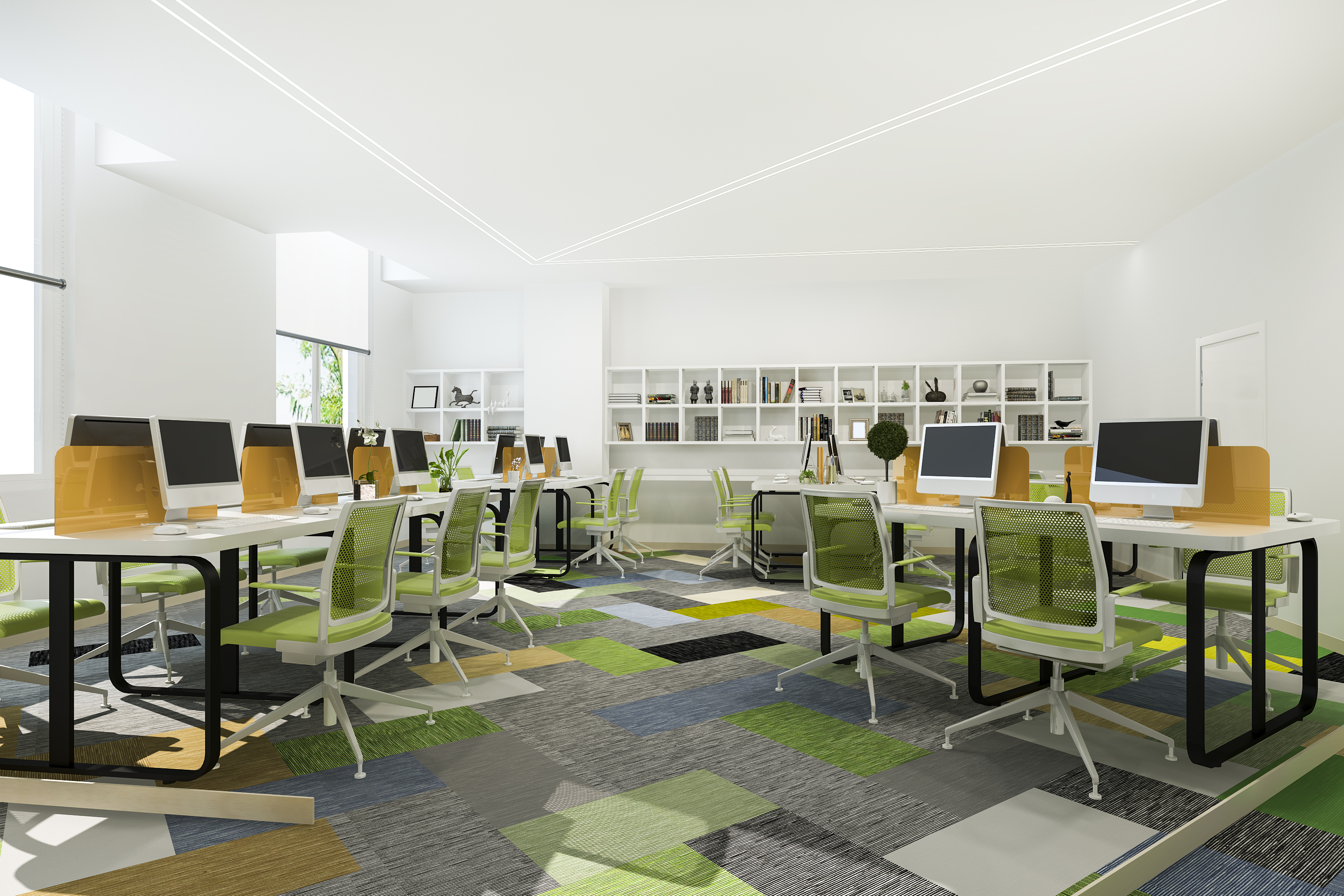
Space Utilization Analysis for Optimal Office Management
Space utilization analysis plays a crucial role in modern office management. As businesses grow and evolve, making the most of available office spaces becomes very important.
Whether managing conference rooms, shared workspaces, or individual desks, tracking space utilization metrics helps companies ensure that every square foot is being used efficiently.
Effective space utilization leads to cost savings, boosts employee satisfaction, and improves overall productivity.
In this article, we’ll dive deep into the importance of space utilization, explore key metrics, and discuss how facilities managers can use this data to create a well-optimized office environment.
What is Space Utilization?
Space utilization refers to how effectively office spaces, such as meeting rooms, desks, and shared areas, are being used within a given period.
Understanding space usage is critical for businesses that want to optimize their physical space.
By analyzing the utilization rate, companies can determine whether they need to reconfigure their office layout, reduce wasted space, or allocate more resources to high-demand areas.
This data-driven approach allows facilities managers to make informed decisions that positively impact business operations.
With fewer employees in the office on any given day, it’s essential to track how often desks, meeting rooms, and conference rooms are occupied, ensuring that spaces are used to their full potential.
Key Space Utilization Metrics to Track
Tracking the right space utilization metrics is important for ensuring that your office space is being used efficiently.
These metrics provide insight into how physical spaces are being used, helping businesses optimize layouts, improve resource allocation, and reduce costs.
Below are some of the key space utilization metrics that facilities managers should regularly track:
1. Space Utilization Rate
The space usage rate measures how effectively office spaces are being used. It is calculated by comparing the time a space is in use against the total time it is available.
For example, if a conference room is available for eight hours a day but is only used for four, the utilization rate would be 50%.
This metric, along with tracking space occupancy, helps businesses identify underutilized areas that could be repurposed or reallocated.
2. Occupancy Rates
Occupancy rates provide insight into the actual usage of office spaces. Key aspects include:
- Peak occupancy, which indicates the highest level of usage during a specific period
- Average occupancy, which reflects overall usage trends
Understanding these rates allows businesses to pinpoint unused or underutilized areas and reassign them for more productive purposes.
3. Square Footage Utilization
Square footage utilization helps facilities managers understand how much space is used per employee.
This metric is vital for businesses looking to optimize office layouts, particularly in hybrid work environments where not all employees are on-site every day.
Efficient square footage utilization, combined with space utilization measures, means fewer wasted spaces and a more streamlined office layout that matches current needs.
4. Cost Per Square Foot
Calculating the cost per square foot is essential for budget optimization. This metric measures how much it costs to maintain each square foot of office space, factoring in utilities, maintenance, and rental fees.
By evaluating the cost per square foot alongside space utilization data, businesses can ensure that they are getting the best value from their office spaces.
5. Occupancy Trends
Tracking occupancy trends over time helps businesses spot patterns and make informed decisions.
Whether it’s identifying seasonal fluctuations in space usage or understanding how office occupancy changes during the week, analyzing trends allows businesses to plan ahead.
This data can inform future office space planning, helping businesses ensure optimal space utilization, such as deciding whether to scale up or down based on actual usage.
How to Measure Space Utilization
Businesses can make informed decisions about current space usage, allocation, cost management, and employee productivity by tracking how areas such as meeting rooms, conference rooms, and workstations are utilized.
This analysis helps companies optimize existing spaces, ensuring they are used to their full potential and aligned with the business’s operational needs.
Below are the key methods and steps for measuring space utilization.
Methods for Gathering Space Utilization Data
There are several ways to collect space utilization data, each offering different levels of detail and accuracy.
These methods help businesses understand how various areas are being used, whether multiple teams are sharing the same space, or if certain spaces are underutilized:
- Manual tracking: This involves physically observing how spaces are used over time. Facilities managers may walk through the office, noting which areas are occupied and which remain empty.
- Occupancy sensors: These sensors are installed in office spaces to automatically track when a space is occupied and for how long.
- Booking systems: Many modern offices use booking systems to manage conference rooms, meeting spaces, and workstations.
Collecting Data
The data collected during a space utilization analysis can vary depending on your business needs, but some common data points include:
- Occupancy data: This refers to the number of employees present in the office versus the total available space.
- Meeting room and conference room usage: Tracking how often meeting rooms and conference rooms are used is necessary for ensuring that these spaces aren’t wasted.
- Shared spaces and collaborative areas: These areas are designed for informal meetings and group activities.
- Desk arrangements and dedicated workstations: In some offices, each employee has a dedicated workstation, while others use flexible seating arrangements.
Utilization Rate Formula:
A simple way to calculate space utilization is by using the following formula:
Space Utilization Rate = (Actual Space Used/Total Available Space) x 100
The Impact of Office Space Utilization on Employee Satisfaction
Office layout and space allocation play a big role in employee well-being and productivity. When space is optimized to meet the needs of employees, whether they are working individually or in teams, it creates a more comfortable and efficient work environment.
- Office layout and space allocation directly affect employee well-being and productivity by providing spaces suited to their needs. A well-designed layout can reduce distractions and increase focus.
- A well-optimized office layout leads to higher employee satisfaction and job engagement. It ensures that employees have the right spaces to perform tasks efficiently, improving overall morale.
- Collaborative spaces, private offices, and event spaces ensure employees have access to spaces suited for collaboration, focused work, and larger meetings. This variety of spaces supports different working styles.
- Balancing shared spaces and dedicated workstations offers flexibility in hybrid working environments, catering to various employee preferences. Providing both shared and individual spaces helps accommodate both team activities and individual tasks.
- Effective space utilization in hybrid workplaces enhances employee engagement by providing the right blend of flexible and fixed spaces. This balance supports the evolving needs of hybrid teams, ensuring everyone has access to the resources they need.
Why Office Space Utilization Matters for Cost Savings
Effective space utilization can help businesses reduce operational costs while maintaining a productive environment.
When office space is managed efficiently, companies can minimize wasted areas, lower energy expenses, and avoid overspending on leasing or maintaining unnecessary space.
Reducing Wasted Space
Proper space management helps businesses identify and eliminate underutilized space, ensuring that every part of the office is used effectively.
By reallocating or repurposing unused and other spaces, companies can optimize their office layouts and prevent wasting valuable real estate.
Cost-Effective Office Management
Improved space usage directly impacts cost reduction by lowering energy consumption, reducing maintenance needs, and minimizing leasing expenses.
Efficient space utilization can significantly cut down on operational costs, especially for businesses with large office footprints.
Corporate Real Estate and Space Planning
Businesses can adjust their real estate portfolio by aligning it with actual space needs, based on space utilization data.
This confirms companies only invest in the space they truly need, which can lead to long-term savings in rental and ownership costs, particularly as workplace needs shift with hybrid work models.
Optimize Office Space Utilization With DeskFlex
Optimizing office layout involves using real-time space utilization data to make informed decisions about how to structure the workplace for maximum efficiency.
By analyzing actual usage data, such as occupancy trends and space utilization rates, businesses can better understand how their office spaces are being used and make changes that align with employee needs and organizational goals.
Key strategies for optimizing office layout with DeskFlex include:
Data-Driven Space Planning
Use DeskFlex’s real-time data to track space utilization, including meeting rooms, desk arrangements, and collaborative spaces.
This allows businesses to reconfigure office layouts based on actual needs. With accurate utilization data, companies can also allocate resources more effectively, minimizing wasted space.
Reconfigure Office Layouts
Adjust the mix of open office spaces, collaborative areas, and private offices depending on usage data, ensuring that each space serves its purpose efficiently.
This flexibility helps create an adaptable environment that meets both organizational and employee demands.
Balance Collaborative and Private Spaces
Based on DeskFlex’s space utilization insights, ensure the right balance between open areas for teamwork and private spaces for focused work.
This promotes a healthier work environment by catering to different work styles and needs.
Eliminate Underutilized Spaces
Identify and repurpose underutilized spaces, turning them into functional areas for employees. Businesses can boost productivity and employee engagement by transforming these spaces into high-traffic zones.
Continuously Monitor and Adjust
DeskFlex allows for ongoing monitoring of office space utilization, enabling businesses to continuously refine their layouts to improve productivity and employee satisfaction.
This dynamic adjustment process helps keep the office layout relevant to changing workforce patterns.
Start using space utilization data to make informed decisions today.
Book a demo today with DeskFlex to get started!
FAQs About Space Utilization Analysis
What is space utilization analysis?
Space utilization analysis measures how effectively office spaces like desks, meeting rooms, and shared areas are used. It helps businesses optimize layouts, reduce wasted space, and improve resource allocation.
How do you calculate space utilization?
Space utilization is calculated by dividing the time a space is in use by the total available time and multiplying by 100. For example, if a meeting room is used for 4 hours out of an 8-hour day, the utilization rate is 50%.
How do you calculate space usage?
Space usage is calculated by tracking how much of the available office space is occupied. This involves gathering data on the number of employees present and the areas being used, such as desks, meeting rooms, and shared spaces.
What is the KPI for space utilization?
Key performance indicators (KPIs) for space utilization include the space utilization rate, occupancy rate, and cost per square foot. These metrics help evaluate how efficiently office space is being used and guide improvements in space management.


















































